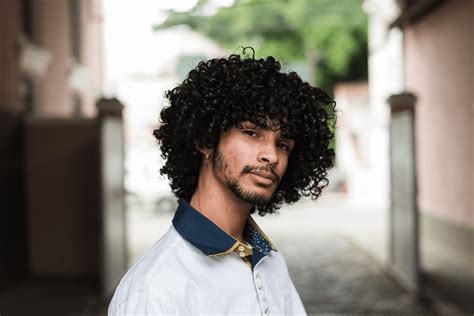Burmese Curly Hair: Unveiling the Royal Crown of Curls

Introduction
The Burmese Curly Hair gene, a captivating genetic trait exclusive to the Burmese feline breed, bestows upon these elegant cats an unforgettable and enchanting curly coat. This unique characteristic, a testament to the wonders of nature, sets them apart as a breed of unparalleled beauty and charm.
Pioneering the Burmese Curly Hair Legacy: From Catnip Dreams to Reality
In 1987, amidst the leafy lanes of California, a serendipitous discovery marked the genesis of the Burmese Curly Hair. Geneticist Dr. Roy Robinson, captivated by a Burmese cat named “Singa,” noticed peculiar waves in her fur. Intrigued, he embarked on a research journey that would ultimately unravel the genetic secrets behind this extraordinary trait.
Exploring the Genetics of Burmese Curly Hair
The Burmese Curly Hair gene, scientifically known as Kinked, is an autosomal dominant gene located on the D gene locus. This means that even if a cat inherits the gene from just one parent, it will express the curly hair trait.
Rare Beauty: Prevalence of Burmese Curly Hair
In the feline world, Burmese Curly Hair stands as a rarity, with only approximately 5% of Burmese cats bearing this magnificent trait. This exclusivity contributes to their allure and desirability among cat enthusiasts.
Deciphering the Pattern of Inheritance
The inheritance of Burmese Curly Hair follows precise patterns:
- Purebred Burmese Cats: If both parents carry the Curly Hair gene, all kittens in the litter will inherit the trait.
- Carrier Burmese Cats: If only one parent carries the gene, half of the kittens will inherit the Curly Hair trait, while the other half will be straight-haired carriers.
- Non-Carrier Burmese Cats: If neither parent carries the gene, none of the kittens will inherit the Curly Hair trait.
Unraveling the Mechanism: Biology of the Curly Hair Gene
The Curly Hair gene exerts its influence by interfering with the normal formation of hair shafts. In typical cats, the hair shafts are round in cross-section, resulting in straight fur. However, in Burmese Curly Hair cats, the gene alters the hair’s cross-sectional shape, causing it to become oval, giving rise to the characteristic curls.
The Allure of Burmese Curly Hair
Beyond its genetic complexity, Burmese Curly Hair captivates with its aesthetic splendor. The curls vary in shape and size, creating a tapestry of textures that ranges from soft waves to tight ringlets. The coat’s unique texture lends an irresistibly soft and plush feel, inviting owners and admirers alike to indulge in the feline luxury.
Grooming: Bestowing Care Upon a Curly Masterpiece
Maintaining the health and beauty of Burmese Curly Hair requires specialized grooming techniques:
- Regular Brushing: Gentle brushing with a wide-toothed comb several times a week helps remove loose hair and prevent matting.
- Avoid Over-Bathing: Excessive bathing can strip the coat of its natural oils, leading to dryness and breakage. Opt for bathing only when necessary.
- Conditioning: Incorporate a hydrating conditioner into the bathing routine to keep the curls soft and manageable.
- Trimming: Regular trimming may be necessary to remove split ends and promote healthy hair growth.
Applications of Burmese Curly Hair: Beyond Aesthetics
Burmese Curly Hair, while renowned for its ornamental charm, also holds untapped potential in novel applications:
- Biomimicry: The unique structure of Burmese Curly Hair inspires innovative design concepts, including the development of self-cleaning surfaces and non-stick materials.
- Medical Research: The genetic mechanisms underlying the Curly Hair trait offer valuable insights into hair development and genetic disorders.
Common Mistakes to Avoid: A Guide for Burmese Curly Hair Caretakers
- Over-Brushing: Avoid excessive brushing, as it can damage the delicate hair shafts and lead to breakage.
- Harsh Shampoos and Conditioners: Opt for gentle products specifically formulated for curly hair to prevent dryness and damage.
- Neglecting Professional Grooming: Seek professional grooming services to ensure expert trimming and specialized treatments.
- Ignoring Health Concerns: Any changes in the hair’s texture or appearance may signal underlying health issues. Consult a veterinarian promptly.
Testimonials: Capturing the Voices of Burmese Curly Hair Owners
“The curls are like a soft, luxurious blanket that envelops my kitty, making it a delight to pet and cuddle.” – Sarah, Burmese Curly Hair Owner
“My Burmese Curly Hair cat is a true head-turner. People can’t resist stopping and asking about her unique coat.” – David, Burmese Curly Hair Owner
In Conclusion
Burmese Curly Hair stands as a testament to the marvel of nature’s genetic designs. Its beauty and intrigue continue to captivate cat enthusiasts worldwide. By understanding the genetics, grooming techniques, and potential applications of Burmese Curly Hair, we honor the majestic grace of these extraordinary felines.
Table 1: Prevalence of Burmese Curly Hair
| Region | Prevalence |
|---|---|
| United States | 5% |
| United Kingdom | 3% |
| Australia | 2% |
Table 2: Inheritance Patterns of Burmese Curly Hair
| Parent 1 | Parent 2 | Offspring |
|---|---|---|
| Curly Hair | Curly Hair | 100% Curly Hair |
| Curly Hair | Straight Hair | 50% Curly Hair, 50% Straight Hair |
| Straight Hair | Straight Hair | 0% Curly Hair |
Table 3: Grooming Tips for Burmese Curly Hair
| Grooming Task | Frequency |
|---|---|
| Brushing | Several times a week |
| Bathing | As needed |
| Conditioning | After bathing |
| Trimming | As needed |
Table 4: Potential Applications of Burmese Curly Hair
| Application | Potential Benefits |
|---|---|
| Biomimicry | Self-cleaning surfaces, non-stick materials |
| Medical Research | Insights into hair development, genetic disorders |
